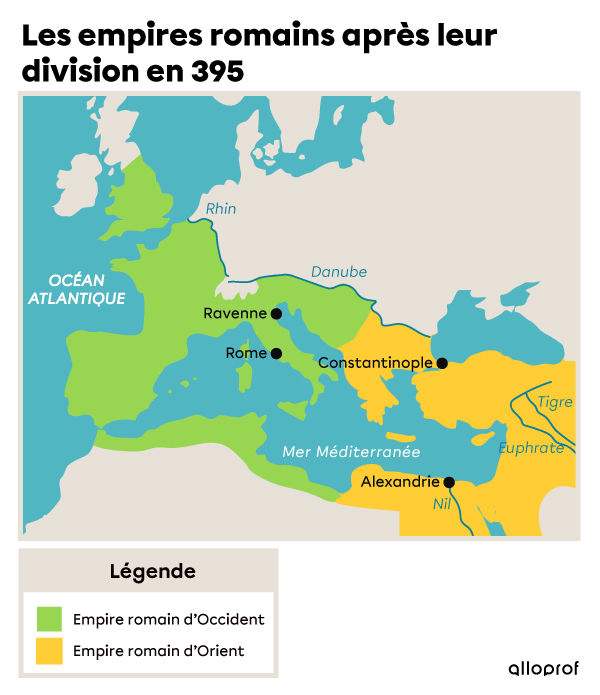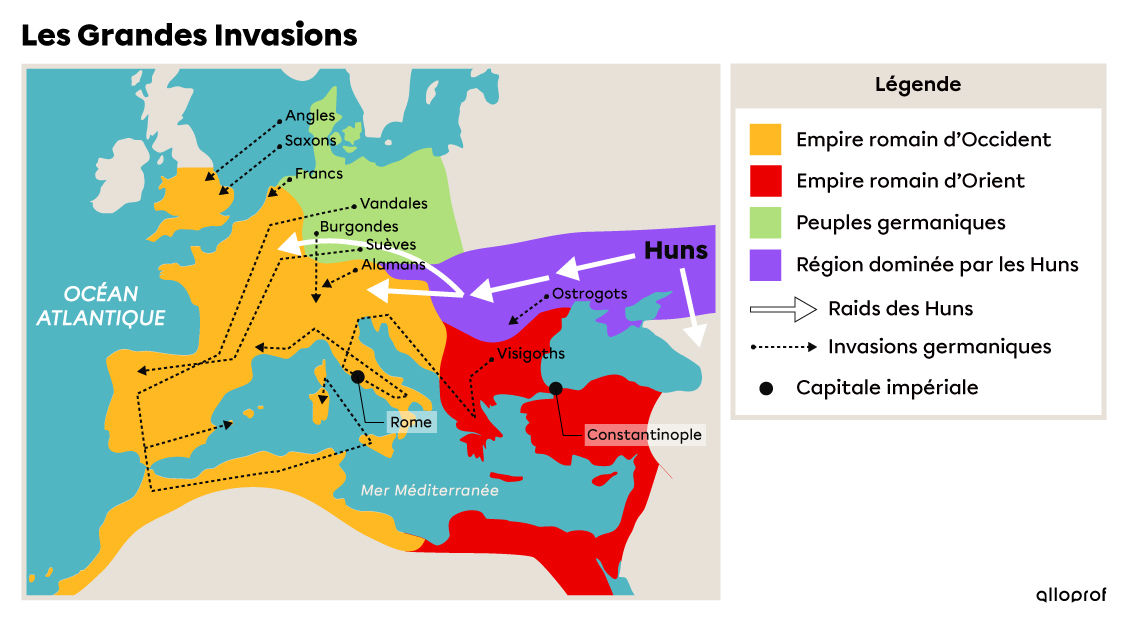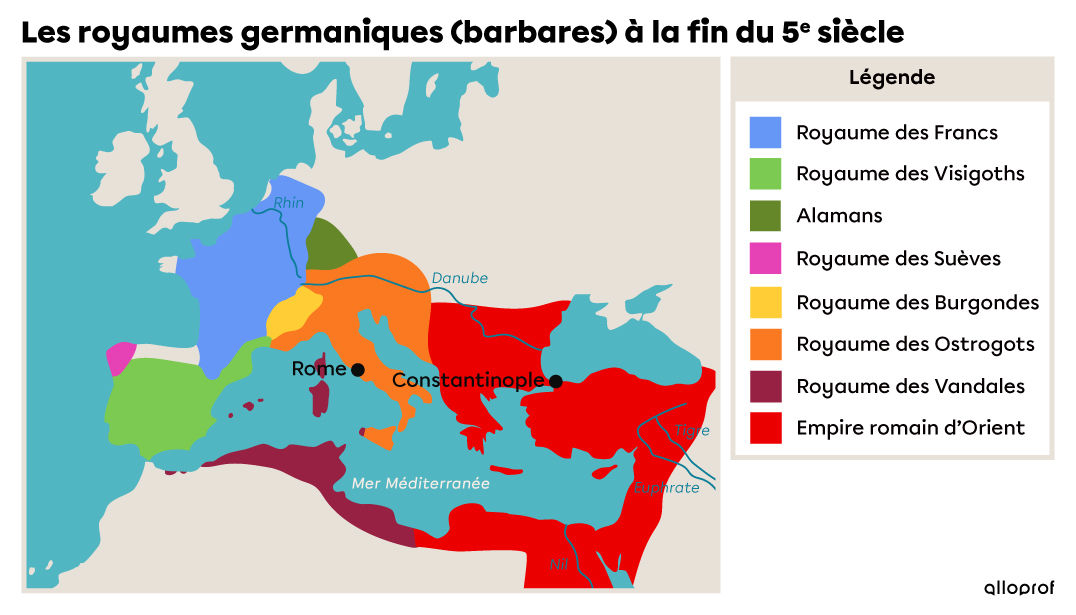The Western Roman Empire disappeared in 476. This event marked the end of Antiquity and the beginning of the Middle Ages. Over the years, political and economic problems weakened the Empire, which then struggled to protect its borders. Peoples living outside the Empire were able to invade and settle in large parts of Roman territory.
At the height of its expansion in the2nd century, the Roman Empire was immense and it became very difficult to protect all its borders. In 395, Emperor Theodosius 1st divided the Empire between his two sons. From then on, the Empire was divided into two parts: the Eastern Roman Empire and the Western Roman Empire. The Western Roman Empire, whose territory included what are now Italy, France, Spain and part of the United Kingdom, experienced major economic and military difficulties. The Eastern Roman Empire, whose territory includes today's Turkey, Lebanon and part of Egypt, had fewer problems.

Note: English image coming soon
The Great Invasions refer to the invasions and population migrations that took place in and around the Roman Empire. The terms Germanic invasions or barbarian invasions are also used to refer to these events.
The word barbarian, in the expression barbarian invasions, simply means that a person or people is neither Roman nor Greek.
In the 4th century, it was becoming increasingly difficult for the Western Roman Empire to find volunteers to enlist in the Roman legion. To solve this problem, a number of mercenaries were hired to make up the shortage of soldiers. The problem was that these mercenaries, most of whom were foreigners, were not very motivated by the idea of giving their lives for the Empire.
-
A Roman legion is a military unit of several thousand men called legionaries.
-
A mercenary is a person who fights, often for a foreign government, in exchange for pay.

In the5th century, several populations entered and moved within Roman territory.
Data source: Leclerc, J., 2014.
Note: English image coming sson
When the Huns arrived in Eastern Europe from Asia and put pressure on the Germanic peoples living outside the Empire, they crossed the borders in search of safety. The Roman legion, made up of several mercenaries, was unable to stop them. The city of Rome was sacked in 410 and the Empire finally collapsed in 476, dividing the territory of the Western Roman Empire into several kingdoms.
The Germanic peoples live in northern Europe.

Data source: Leclerc, J., 2014.
Note: English image coming soon
Leclerc, J. (2020). Linguistic expansionism in the Roman world. Language planning in the world. http://www.axl.cefan.ulaval.ca/francophonie/HIST_FR_s1_Expansion-romaine.htm